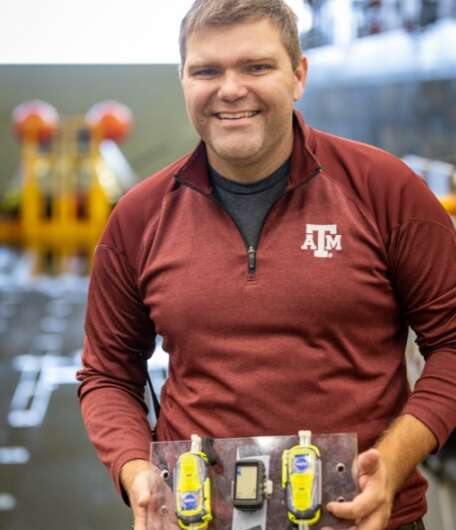This test is the last of the series before the uncrewed Artemis I that will pave the way for future missions to the Moon with astronauts. NASA's Landing and Recovery Team is practicing a variety of procedures that enable the safe recovery of astronauts and the Orion spacecraft. NASA's Search and Rescue (SAR) office—part of the agency's Space Communications and Navigation (SCaN) program—is testing critical distress beacon technologies for Artemis contingency operations.
The Cospas-Sarsat program is an international effort to provide first-responders with satellite-aided distress location services. Since its founding in 1979, NASA has lent technical expertise to the program.
The Cospas-Sarsat system uses a protected 406 MHz frequency to provide accurate and reliable emergency location services. Cospas-Sarsat repeaters on GPS and other similar space-based systems "listen" for beacons and relay signals to ground stations upon activation. While the system operates independently of GPS, it can also transmit GPS coordinates for enhanced accuracy if available.
"NASA search and rescue initiatives have paved the way for rescue authorities around the world to develop new technologies and techniques to rescue people on land, air, and sea," said JJ Miller, SCaN deputy director for GPS Policy. "It is only natural that NASA enhance these services even further to focus on our primary human exploration missions as well."
For Artemis missions, astronauts plan to stay inside Orion until recovery forces reach them. In the unlikely event that astronauts need to leave Orion before the recovery team reaches them, NASA will track and retrieve them using specialized Advanced Next-Generation Emergency Locator (ANGEL) beacons on their life vests.

"The Artemis missions are using our newest technologies, setting the stage for further enhancements and availability to other users," said SAR Office Chief Lisa Mazzuca. "These new innovations take full advantage of upgrades to the Cospas-Sarsat space segment."
ANGEL beacons are refined and miniaturized second-generation beacon technology developed by the SAR office, based at NASA's Goddard Space Flight Center in Greenbelt, Maryland. They offer robust location services through Cospas-Sarsat. Within moments of activation, the network can calculate the astronauts' location to an accuracy of about a hundred meters anywhere in the world.
"Second-generation beacons take full advantage of a new constellation of medium-Earth orbit search and rescue instruments on global navigation satellites," said Dave Watson, a SAR engineer currently on the recovery ship. "In tandem with new beacons and ground infrastructure, the search and rescue constellation offers Artemis a unique, precision capability."
During this recovery test, SAR personnel aboard the ship are working closely with the Exploration Ground Systems team from NASA's Kennedy Space Center in Florida to test operational use of the ANGEL beacons by attaching them to small boats in the open water, activating the beacons, and validating and monitoring the system from the SAR Lab at Goddard. They are testing the SAR Intelligent Terminal (SAINT) application, which provides ANGEL data to the recovery team. Additionally, the team is practicing passing beacon data to mission control at NASA's Johnson Space Center in Houston.
"This recovery test is a highly collaborative effort involving several government agencies and experts across multiple NASA centers," said SAR National Affairs Mission Manager Cody Kelly, who is leading SAR testing efforts aboard the ship. "Together, we're preparing to support the next generation of lunar explorers—it's a testament to all that we can achieve when we explore as one."
For the first few Artemis missions, NASA will use ANGEL beacons primarily for splashdown or in the unlikely event of a launch abort scenario. As the Artemis missions progress toward a sustained presence on the lunar surface, the SAR office has plans to develop enhanced Lunar Search and Rescue (LunaSAR) capabilities that address the unique challenges of providing emergency communication and location services to astronauts operating on the Moon.
While Artemis astronauts will be their first users, NASA and the Cospas-Sarsat program will soon make second-generation beacon technologies available to the public through commercial vendors. Then, hikers, boaters, and adventurers of all stripes will benefit from the same innovations that bring NASA astronauts safely home.



